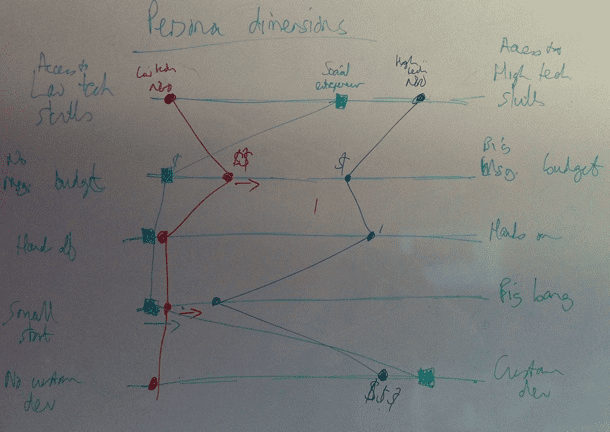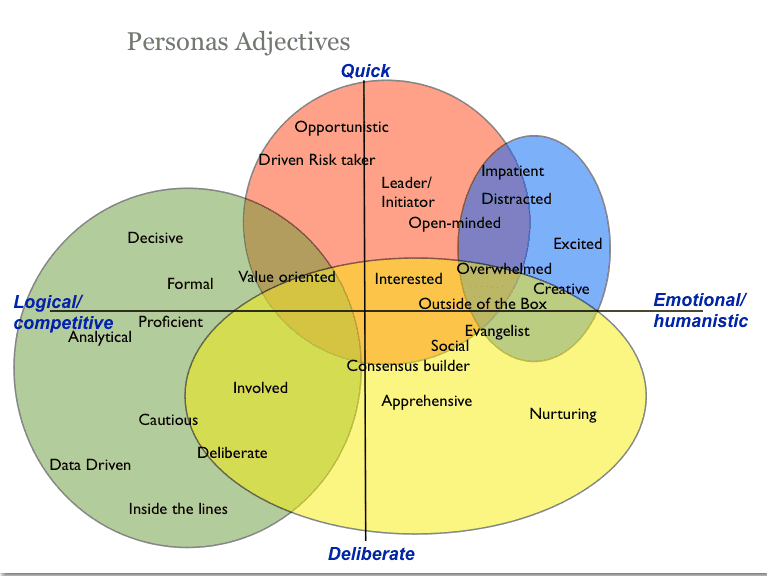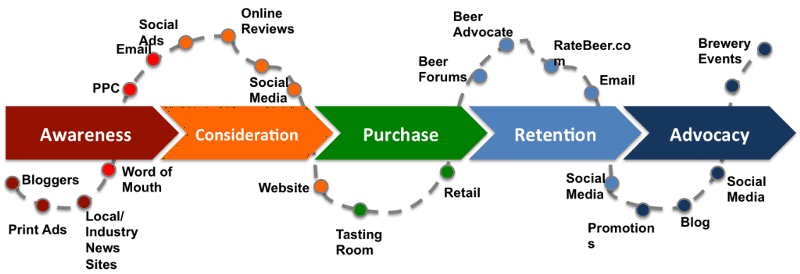Startups, Sales, UX, and building a repeatable growth engine
As consumers and product users, we are perpetually purchasing “things” that end up going unused. We blame ourselves for misunderstanding our own needs and motivations, the product for not “working”, the salesperson for coercing us, and the flashy (but misleading) ad. For whatever reason, things don’t work out. Boxsets go unwatched, bikes go unridden, high-tech car features go untouched, and personal finance software gathers virtual dust.
This extends to much of the software we use in our day-to-day work.
For some hot domains in the B2B SaaS software world — collaboration, analytics, big-data, CRM, and marketing automation — the root problem is not a tool problem. Tools, and countless variations, exist by the boatload. Rather, the problem exists in our organizational cultures, structures, and roles, our data-literacy, our ability to adapt to new ways of working, and our innate individuality when it comes to interacting with products in general. It’s tough to be one-size-fits-all.
These are meaty problems that transcend domain. They attract a lot of entrepreneurial and investment attention, despite the competitive landscape and low odds of success. Even when you understand those root barriers to adoption (culture, skills, literacy), forging a repeatable business model can be challenging. But most don’t get that far …
Beyond dealing with the competition, startups routinely drift into confusion and cognitive bias. Founders confuse their own early sales efforts — selling on vision and big picture — with the day-to-day work of their reps. We equate growth with demand and a large available market. And assume our product “fits” because someone presses Purchase Now or cuts a check.
Popular methodologies (e.g. Lean Startup) promote experimentation. But there’s a big difference between testing with a squirt gun and a firehose. Lean Startup stresses structured and focused experiments, but this rigor is often overlooked when the rubber hits the road and the team fires up Marketo and Salesforce.
Testing with a firehose can yield results (think growth and sales) but not the learnings required to sustain that growth before running out of money or imploding. This extends to being “customer-obsessed”.
We confuse our ability to sell to and support our customers with our ability to repeatedly make someone happy with our product. Heroic efforts feel great, but it is damn difficult to make them repeatedly great. It translates to customer education — “our customers would absolutely fall in love with our product if they knew how to use it”. And most nefariously to how we iterate on and build our product — “if our customers pay us, then their requests are valuable”.
The common theme here is a misunderstanding (either through lack of experience, or founder goggles) of something user experience professionals deal with every day. No one person or company thinks, works, and adopts software the same way. Personas are far more rich and varied than we would like to believe. Product complexity increases exponentially as the number of personas/goals/situations increase. To solve someone’s problem, and validate that you’ve solved it, you need to get specific.
This is something that most of us understand intuitively — “no one person is the same” — but its impact on product design and sales service design (sales is a “service” if you think about it) is routinely underestimated. It’s the opportunist in all of us. We’d like to believe that there is a homogenous groundswell of interest in our product. So we turn on the sales firehose.
 Sales and UX have a lot in common. Both deal with psychology every day — sales to close the deal, and UX to design the experience
Sales and UX have a lot in common. Both deal with psychology every day — sales to close the deal, and UX to design the experience
. Sales understands that certain pains are ubiquitous, and routinely exploits that to close a deal and connect that to the story of your product. It’s necessary to try novel things and be scrappy. New stories, incentives, and nudges move the needle in the short-term. What we say we need, and what we actually need are two different things. Sales and UX gets all of this.
Like users, sales teams optimize around what is “easiest” to sell, which may not correlate with what is easiest to support, retain, and grow. Internally, incentives reign supreme and — as any UX pro knows — it is difficult to reroute the sales freight train once it is up to full speed. Once a sales team gets moving it takes on a life of its own. Without a strategy, things can go a little haywire. Part and parcel to that strategy is having a sense of the “who”.
 UX knows it is very difficult to design a product or service that pleases all people, in all situations. People may look similar, and their pains may, in fact, be similar, but their product needs are not similar. Sales sells to common pains. UX designs for specific groupings of people and their pains. When UX thinks about personas they consider (among other things) technical savvy, experience with similar tools, experience in the domain, psychographics, barriers to adoption, relationships, demographics, behavioral traits, and organizational culture. Importantly, they design for a limited “fingerprint” across these various dimensions
UX knows it is very difficult to design a product or service that pleases all people, in all situations. People may look similar, and their pains may, in fact, be similar, but their product needs are not similar. Sales sells to common pains. UX designs for specific groupings of people and their pains. When UX thinks about personas they consider (among other things) technical savvy, experience with similar tools, experience in the domain, psychographics, barriers to adoption, relationships, demographics, behavioral traits, and organizational culture. Importantly, they design for a limited “fingerprint” across these various dimensions
.
 http://www.elezea.com/2013/09/case-study-vumi-go-redesign/For example, there is a big difference between someone who knows how to solve the problem (with the right tool)
http://www.elezea.com/2013/09/case-study-vumi-go-redesign/For example, there is a big difference between someone who knows how to solve the problem (with the right tool)
and someone who aspirationally seeks a solution. Both will buy the product and respond to pain selling. Building a product for both requires different strategies. John, an executive in a low growth industry working inside a stiff organizational culture will behave differently from Mary, an exec working inside a nimble, tech-forward organization in a high-growth sector. Both may be aware of the problem to solve. They agree on that. But John’s work will need to withstand organizational blockers, while Mary has to be scrappy and get the data she needs to secure next year’s budget.
 http://www.bryaneisenberg.com/personas-magic-behind-mirror/Increasing sales does not mean you have a repeatable sales process
http://www.bryaneisenberg.com/personas-magic-behind-mirror/Increasing sales does not mean you have a repeatable sales process
, or a repeatable path to growth. It doesn’t prove your product actually delivers specific value. Proving this requires more rigor. You are validating a “designed” sales process:
- A specific user persona, buyer personas, and organizational persona
- Your ability to locate, attract, and communicate with all three in a repeatable fashion
- Understand the varied needs of a specific set of users
- Structured and consistent messaging and marketing … a singular brand message
- Similar touch points along the customer journey
- A match with the product as it exists today. Not an imaginary future version of the product
- Acquisition and retention costs (including ad-hoc feature development costs) … focusing on ongoing expectations. A startup can rapidly meet new customer requests. Will the customer be as enthusiastic as that growth slows? The key here is specificity. Selling to everyone may make your quota, but it diminishes learning.
UX deals with this often. When we research and design, we focus on specific personas (or small set of personas). When we test our designs, we focus on people AND situations that match those personas. We iterate on that understanding constantly. And then we apply those learnings and patterns elsewhere in the product. Through a variety of methods, UX Research seeks to answer three questions — what do people want, what do people need, and can people use it — — through the lense of a specific person and situation
What are some specific examples?
Nothing new here, but UX (and marketing) develops AND validates rich personas. Are these people who we think they are? Does their behavior match who we think they are? We consider psychographics, demographics, goals, motivations, roadblocks, domain-specific characteristics, current roadblocks, etc. This is commonplace for big companies, but during the startup phase we are constantly drilling down, iterating, and validating our “persona hypothesis”. This is almost impossible if you’re taking a broad approach. Sure, your sales and growth might be higher, but you’re not learning.
 http://www.garymagnone.com/blog/content-marketing-digital-touchpoints/This attention extends to the customer journey. How does the customer interact with your company from first impressions — the ad online or mention at a conference — to their first renewal as a happy company. UXers attempt to understand these types of problems using customer journey maps
http://www.garymagnone.com/blog/content-marketing-digital-touchpoints/This attention extends to the customer journey. How does the customer interact with your company from first impressions — the ad online or mention at a conference — to their first renewal as a happy company. UXers attempt to understand these types of problems using customer journey maps
and then by validating these against actual customer behavior. Again, the more of these you now support, the more assumptions you have in “inventory”. Sheer luck and persistence can grow the business, but learning which journey actually produces that happy renewal is paramount.
Finally, UX is constantly testing prototypes. We design low-cost experiments (designs), test, and iterate. Before doubling down, we make sure the design is going to work. This extends to pushing product live and measuring how people actually use the product. Modern startup buzz-wordists have coined the term growth hacker, and on many levels UX and growth-hacking are remarkably similar: with common traits of creativity, experimentation, prototyping, empathy, data and analysis.
I’m persuaded that the real value of freemium and self-serve free-trial models is that they create a framework within which it is difficult to bias the results. The models limit touch points and user journeys. We validate our positioning, adoption, and renewal in a repeatable way that can be easily adapted. Perhaps that’s the true value … freemium and self-service free trials may not be “better” than more high touch sales, but they certainly have the potential to be a lot less biased.
In closing …
- View sales as a service design concept, and embrace those methods accordingly. On principle, you’ll start with specific personas which is the real message here. You’ll learn to understand the customer journey across your product — from first touch to renewal.
- Choose learning over growth. Learning starts with specific tests, not a firehose. Learning transcends departments in your growing startup. Set learning goals, not sales goals. The sales model validation process cannot be run independently of product or retention experiments.
- Embrace the value of the lean canvas in all of its complexity. Don’t skimp on the market segmentation, cost model, and channel hypotheses. Testing more than one or two things at once is virtually impossible.
- Attract a sales team that is open to iterating, learning, and rolling with changes in approach. Your best bet may be less experienced, but more flexible team members.